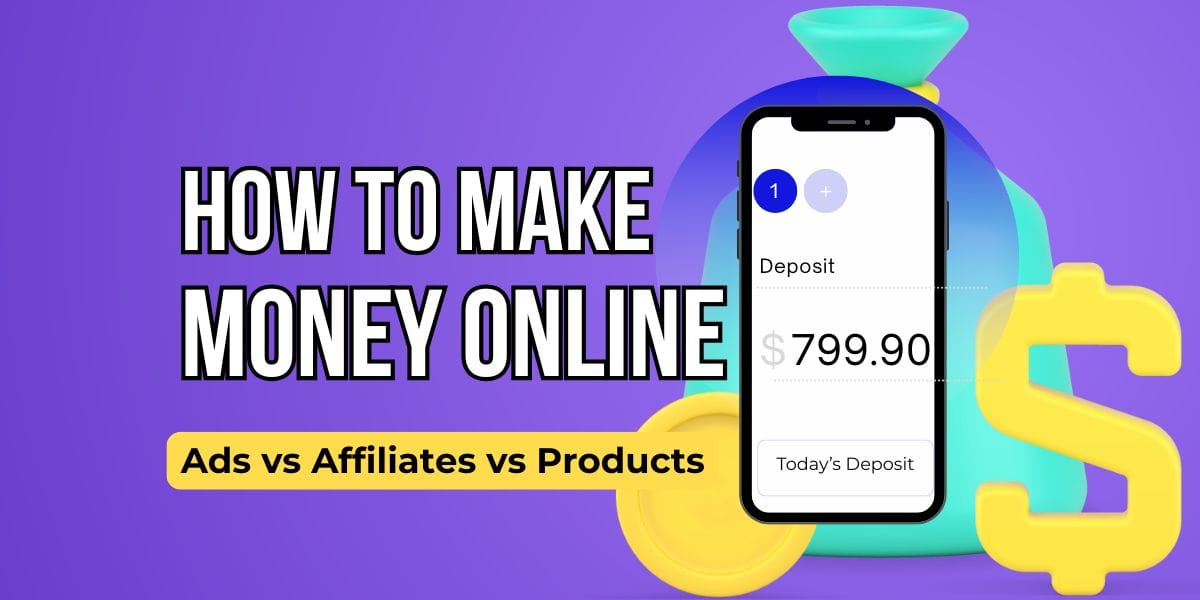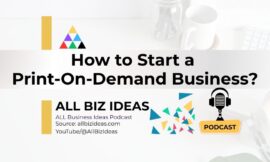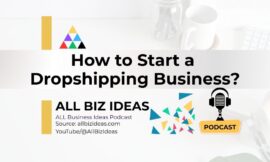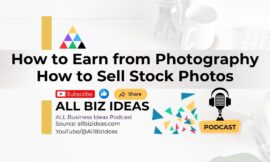3 Strategies on How to Make Money Online? Blog Monetization Guide: Ads vs. Affiliates vs. Products
If you’ve ever asked yourself “How to Make Money Online?”, you’re not alone. With millions of people looking for ways to generate income from the internet, blogging has become a popular and profitable option. But success doesn’t happen by accident — you need a solid blog monetization strategy.
In this guide, we’ll explore the three most effective strategies to monetize your blog:
- advertising (display ads),
- affiliate marketing,
- and selling digital products.
- We’ll compare the pros and cons of each, helping you decide what’s right for your blog and niche.
Frequently Asked Questions (FAQs)
Q1. What are the three most effective strategies for monetizing a blog online?
The three most effective strategies for monetizing a blog are display advertising, affiliate marketing, and selling your own digital products. Each method offers distinct advantages and caters to different stages of a blog’s growth and audience engagement.
Q2. Why is blogging considered a smart and scalable way to make money online?
Blogging is considered a smart and scalable way to make money online because it allows you to build an audience over time, establish authority in a specific niche, create multiple income streams, and work from anywhere. Its scalability means you can start small and continuously expand your reach and earnings.
Q3. How do display ads work as a monetization strategy, and what are their main pros and cons?
Display ads involve earning money by showing advertisements to your blog readers through platforms like Google AdSense, Mediavine, or Ezoic. You earn based on impressions (CPM), clicks (CPC), or specific actions (CPA). The main pros are ease of implementation, scalability with traffic, and a hands-off approach once set up. However, the cons include low earnings with low traffic, potential to slow down your website, and possible disruption to the user experience. Significant revenue typically requires at least 10,000 monthly visitors.
Q4. What is affiliate marketing, and what are the key factors for success in this method?
Affiliate marketing involves promoting other people’s products or services and earning a commission when a reader purchases through your unique link. Key factors for success include choosing affiliates carefully (only promoting products you genuinely recommend and that align with your audience’s needs), creating compelling content that naturally integrates affiliate links (e.g., in-depth reviews, comparison posts), and building trust with your audience. While it has higher earning potential than ads, income relies on conversions and building authority.
Q5. What does selling your own digital products entail, and why is it considered the most profitable method?
Selling your own digital products involves creating and selling items like eBooks, online courses, memberships, or printables directly to your audience. This method is considered the most profitable because you keep 100% of the revenue (minus platform fees) and have full control over pricing, promotion, and product quality. It allows you to build long-term business value and become a creator rather than just a promoter. However, it requires significant upfront time and effort for creation, and you’re responsible for customer service.
Q6. Which monetization strategy is best for different types of bloggers (beginners, niche bloggers, authority bloggers)?
The best monetization strategy depends on your blog’s stage and goals:
- Display Ads are best for beginners with high traffic who want a hands-off approach.
- Affiliate Marketing is ideal for niche bloggers with loyal readers who can trust their recommendations, especially in areas like tech, finance, or lifestyle.
- Selling Products is best for authority bloggers with an established niche and audience, who have expertise to share and want to build a sustainable, scalable income. Many successful bloggers combine these strategies over time.
Q7. How crucial is SEO for successful blog monetization, and what are some key SEO tactics?
SEO (Search Engine Optimization) is crucial because for content to generate income, it needs to rank well in search results and be found by your audience. Key SEO tactics include:
- Using target keywords naturally in titles, headers, and meta descriptions.
- Writing in-depth content (1,000+ words) that solves audience problems.
- Optimizing for search intent to understand what readers are looking for.
- Building backlinks from reputable websites.
- Improving page speed and mobile usability for better rankings.
Q8. Beyond the three main strategies, what "bonus tip" is provided for increasing blog income?
The bonus tip provided for increasing blog income is email marketing. It is suggested that email marketing can double or even triple your blog income by effectively nurturing leads and promoting products to a dedicated audience list. Building and engaging with an email list allows for more direct and personalized communication, leading to higher conversions and sustained engagement.
Why Blogging is Still a Smart Way to Make Money Online
Before diving into monetization, let’s clarify why blogging remains one of the best answers to the question: How to Make Money Online?
Blogging allows you to:
- Build an audience over time
- Establish authority in your niche
- Create multiple income streams
- Work from anywhere
And most importantly — it’s scalable. You can start small and grow big. Best web hosting budget for a WordPress blog site.
1. Display Ads: Passive Income Through Traffic
Display ads are the most beginner-friendly way to start earning. Platforms like Google AdSense, Mediavine, and Ezoic allow bloggers to earn money by showing ads to their readers.
Pros:
- Easy to implement
- Scales with traffic
- Hands-off once set up
Cons:
- Low earnings with low traffic
- Can slow down your website
- May disrupt user experience
If you’re asking “How to Make Money Online?” with minimal effort and steady traffic, ads might be a good starting point. But remember: it typically takes at least 10,000 monthly visitors to see meaningful ad revenue.
How Display Ads Works:
- CPM (Cost Per Thousand Impressions): You earn money based on how many times the ad is shown (impressions).
- CPC (Cost Per Click): You earn money each time a user clicks on the ad.
- CPA (Cost Per Acquisition): You earn money when a user takes a specific action (like signing up for a service or purchasing something via the ad).
Ads work best for blogs with high traffic, as more visitors mean more opportunities for impressions and clicks.
Why It Works:
- Low Effort: Once you set up your ads, they pretty much run themselves. You don’t need to actively manage them.
- Steady Income: If you have consistent traffic, ads can provide a stable, passive income stream.
- Scalability: As your blog grows and attracts more visitors, your ad revenue can increase without needing to launch new products or affiliate programs.
Challenges:
- Dependence on Traffic: Ad revenue is directly tied to traffic, so if your site’s traffic fluctuates, your earnings will too.
- Low Income for Small Blogs: If your blog is new or has low traffic, ad revenue can be modest until your audience grows.
- Ad Blindness: Many users have “ad blindness” and ignore banners or pop-ups, reducing your earnings.
Best For:
- Blogs with high traffic (usually 10,000+ visitors/month).
- Bloggers who want a hands-off monetization strategy.
- Websites that can display ads without harming the user experience (e.g., sites that don’t have too much content clutter).
Tactics for Success:
- Focus on growing your traffic with SEO and content marketing.
- Experiment with different ad formats to see what works best with your audience.
- Work with premium ad networks like Mediavine or AdThrive once your traffic qualifies (usually around 25,000+ pageviews per month).
2. Affiliate Marketing: Recommend and Earn
Affiliate marketing involves promoting other people’s products and earning a commission when someone buys through your link.
Top affiliate programs include:
- Amazon Associates
- ShareASale
- CJ Affiliate
- ClickBank
Pros:
- Higher earning potential than ads
- Works well with product reviews, tutorials, and niche content
- Can be automated with blog funnels and email marketing
Cons:
- Earnings depend on conversions, not just traffic
- Requires trust and authority in your niche
- Some programs have strict rules or short cookie windows
When people wonder “How to Make Money Online?” with a blog, affiliate marketing is usually one of the most recommended paths — especially for niche bloggers in tech, finance, health, and lifestyle.
More on Affiliate Marketing:
Affiliate marketing involves promoting third-party products or services on your blog and earning a commission on any resulting sales or leads. You can become an affiliate by joining affiliate networks like Amazon Associates, ShareASale, CJ Affiliate, or Impact.
How It Works:
- You place affiliate links within your content—usually in the form of product recommendations, reviews, or “how-to” guides.
- When a reader clicks the link and makes a purchase, you earn a commission.
- Commissions can range from 1% to 50%+, depending on the affiliate program and product type.
Why It Works:
- High-Earning Potential: Some affiliate programs offer high commissions for each sale, especially for high-ticket items (e.g., software, courses, or luxury goods).
- Fits with Content: You can integrate affiliate links naturally into your content (e.g., product reviews, tutorials, or “best of” lists).
- Long-Term Earnings: Some affiliate programs offer recurring commissions, especially for subscriptions or services.
Challenges:
- Building Trust: Readers need to trust your recommendations. If you promote low-quality products or services just for the commission, it can hurt your credibility.
- Income Variability: Affiliate income can fluctuate. Some months you’ll make a lot, others not much—depending on how many clicks and conversions you get.
- Traffic Dependency: Like ads, affiliate income is reliant on traffic and click-through rates.
Best For:
- Blogs that review products or focus on a niche with monetizable affiliate products (e.g., tech, lifestyle, health, or finance).
- Bloggers with a loyal audience who trust their recommendations.
- Websites that can produce long-form content that naturally integrates affiliate links (e.g., guides, case studies, or resource pages).
Tactics for Success:
- Choose affiliates carefully—only promote products you genuinely recommend and that align with your audience’s needs.
- Create compelling content that integrates affiliate links naturally (e.g., in-depth product reviews, comparison posts, or roundups).
- Use tools like ThirstyAffiliates to manage and cloak your affiliate links.
3. Selling Products: Your Own Digital Empire
The most profitable (but also most work-intensive) monetization method is creating and selling your own digital products. This could include:
- eBooks
- Online courses
- Memberships
- Printables
- Webinars or workshops
Pros:
- Highest profit margins
- You keep 100% of the revenue
- Builds long-term business value
Cons:
- Requires more time and effort
- Need to build trust and authority first
- Customer service and technical setup can be challenging
For those serious about how to make money online, selling your own products provides full control and long-term income. You’re not just a promoter — you become a creator and business owner.
More on Selling Products Online:
Selling your own products is a more active form of monetization. These can include physical products (like merch or print-on-demand items) or digital products (like eBooks, online courses, or templates). You’re in full control of the sales and pricing.
How It Works:
- You create a product, list it for sale on your blog or a platform like Shopify, Etsy, or Gumroad, and promote it to your audience.
- You earn 100% of the profits, but you also take on the responsibility of customer service, inventory (for physical products), and product creation.
Why It Works:
- Full Control: You control the pricing, promotions, and product quality. It’s your brand and your products.
- High Profit Margins: You get to keep all the profits (minus any platform fees or transaction costs).
- Scalability: Once your product is created, you can continue selling it indefinitely.
Challenges:
- Time & Effort: You need to put in effort to create the product (e.g., writing an eBook, developing an online course, designing merchandise).
- Customer Service: Especially for physical products, you’ll need to handle shipping, returns, and customer inquiries.
- Upfront Costs: For physical products, there may be upfront costs (e.g., buying inventory or creating a prototype).
Best For:
- Bloggers with an established niche or audience who can create products their readers will value.
- Content creators with expertise in a specific area who can teach (online courses) or create digital resources (eBooks, printables, templates).
- Bloggers who want to build a more sustainable, scalable income.
Tactics for Success:
- Start by creating digital products like eBooks, online courses, or printables, which have low overhead costs and no inventory.
- Use a platform like Shopify or Etsy for physical products, or Teachable or Kajabi for courses.
- Focus on building a community and nurturing your audience to build trust and increase product sales.
Ads vs. Affiliates vs. Products: Which is Best?
Monetization Method | Best For | Earnings Potential | Difficulty Level |
Display Ads | Beginners with high traffic | Low to medium | Easy |
Affiliate Marketing | Niche bloggers with loyal readers | Medium to high | Moderate |
Selling Products | Authority bloggers | High to very high | Hard |
The truth is, there’s no one-size-fits-all answer to “How to Make Money Online?” It depends on your audience, niche, and goals.
Many successful bloggers use a combination of these strategies. For example, you might start with ads, grow into affiliate marketing, and eventually launch your own course or digital product.
SEO Tips for Monetization Success
To really succeed with blog monetization, your content needs to rank. Here’s how to optimize your blog for SEO:
- Use your target keyword — like “How to Make Money Online?” — naturally in your title, headers, meta description, and throughout the article.
- Write in-depth content (1,000+ words) that solves your audience’s problems.
- Optimize for search intent — know what your readers are looking for.
- Build backlinks from reputable websites in your niche.
- Improve page speed and mobile usability for better rankings.
How to Make Money Online? It’s All About Strategy
So, how to make money online? The answer isn’t just about choosing one method — it’s about combining the right strategies at the right time.
Start simple. Focus on building traffic and trust. Then experiment with ads, affiliate links, and digital products to see what works best for your audience.
Consistency, SEO, and high-quality content are your best friends. With patience and the right monetization approach, your blog can become a real income-generating asset.
Monetizing your blog in 2025 requires a strategic approach that aligns with your audience’s needs, your expertise, and your goals. Whether you choose ads, affiliate marketing, or selling your own products, each method offers unique advantages.
The key to maximizing your earnings is to understand your audience, create high-quality content, and explore multiple monetization strategies that work together. As your blog grows, you can experiment with different approaches to find what works best for you.
Bonus Tip: How to make money online?
Email marketing can 2x or 3x your blog income by nurturing leads and promoting products more effectively. Don’t ignore your list!



